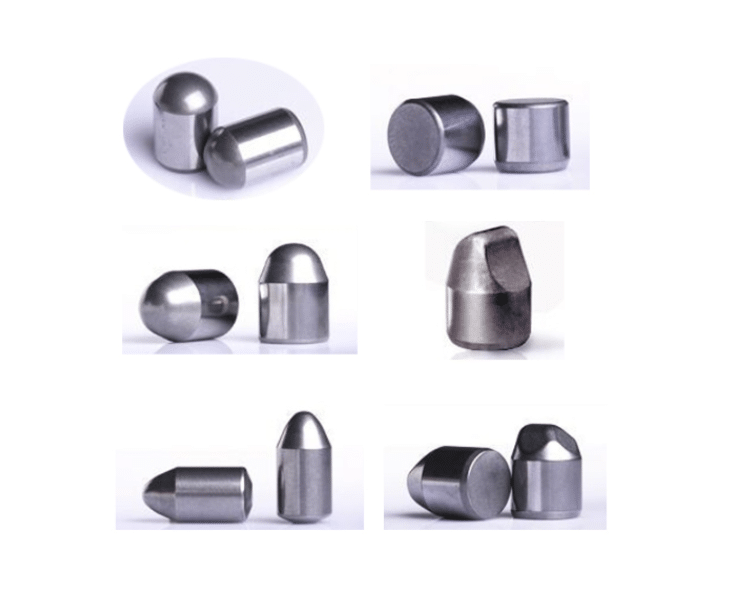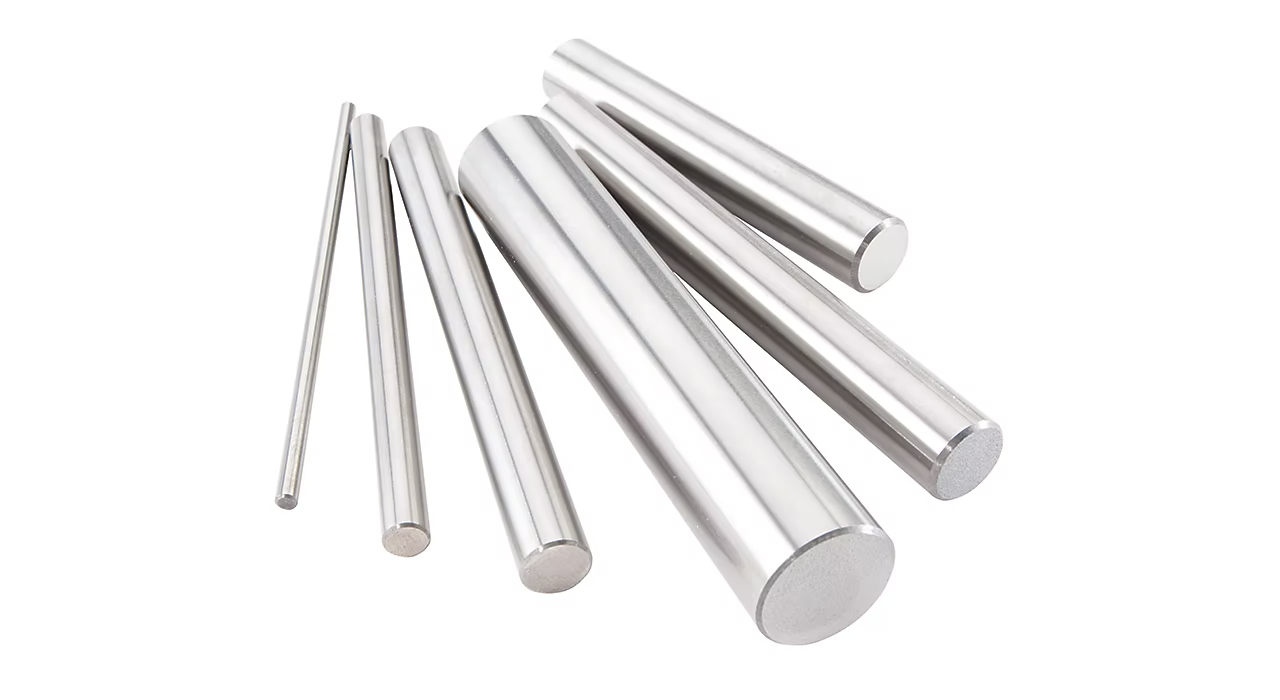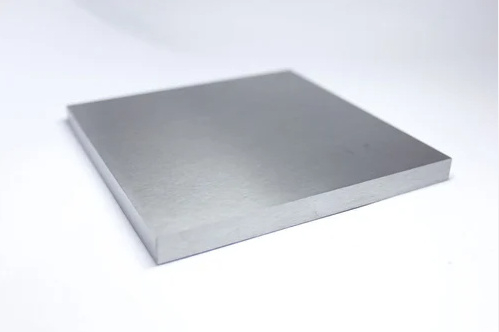Conquering Wear, One Button at a Time: A Deep Dive into Durability
In the demanding arenas of mining, construction, and heavy industry, where abrasion and impact reign supreme, conventional materials often falter. Enter solid carbide buttons – engineered for extreme environments, these small but mighty components redefine wear resistance, pushing the boundaries of equipment lifespan and productivity.
This comprehensive guide delves into the depths of solid carbide buttons, exploring their intricacies, applications, and the factors that set them apart as the ultimate solution for combating wear.
What are Solid Carbide Buttons?
Tiny Titans of Toughness: Unraveling the Composition and Construction
Solid carbide buttons are wear-resistant components typically brazed or welded onto the surface of tools and equipment subjected to extreme abrasion, impact, and erosion. Unlike buttons with a carbide core and a less durable outer layer, solid carbide buttons are composed entirely of cemented carbide, a composite material renowned for its exceptional hardness and wear resistance.

The Power of Cemented Carbide: A Winning Combination of Hardness and Toughness
Cemented carbide, also known as tungsten carbide, is created through a process called powder metallurgy. Finely powdered tungsten carbide, known for its extreme hardness, is mixed with a metallic binder, typically cobalt, and then subjected to high temperatures and pressure. This sintering process fuses the materials, creating an incredibly dense and durable composite material.
How Solid Carbide Buttons Work
Standing Strong Against the Forces of Wear: The Science Behind Exceptional Durability
The remarkable wear resistance of solid carbide buttons stems from the unique properties of cemented carbide:
- Extreme Hardness: Tungsten carbide, the primary component, boasts one of the highest hardness levels of any known material, significantly exceeding that of steel and other common wear materials. This exceptional hardness enables the buttons to withstand abrasive wear from hard, sharp particles.
- High Compressive Strength: The sintering process creates a dense, interconnected structure within the cemented carbide, giving it exceptional compressive strength. This allows the buttons to withstand high impact forces without fracturing or deforming.
- Chemical Resistance: Cemented carbide exhibits excellent resistance to corrosion and chemical attack, making it suitable for use in harsh environments where other materials would succumb to degradation.
Navigating the World of Solid Carbide Buttons: Types, Grades, and Applications
Not All Buttons are Created Equal: Understanding the Nuances of Different Grades
Solid carbide buttons are available in a wide range of grades, each tailored to specific wear challenges and operating conditions. The grade of a carbide button is determined by factors such as:
- Grain Size: The size of the tungsten carbide particles within the cemented carbide matrix influences hardness and toughness. Finer grain sizes generally offer higher hardness and wear resistance, while coarser grains provide increased toughness and impact resistance.
- Cobalt Content: The percentage of cobalt binder used in the cemented carbide affects the button’s hardness, toughness, and cost. Higher cobalt content typically results in increased toughness and impact resistance but lower hardness.
- Other Additives: Manufacturers may incorporate other additives, such as titanium carbide or tantalum carbide, to enhance specific properties like wear resistance, corrosion resistance, or high-temperature performance.
Solid Carbide Button Specifications: A Glimpse into Key Characteristics
| Feature | Description |
|---|---|
| Type | Solid Carbide |
| Material | Cemented Carbide (Tungsten Carbide) |
| Hardness | Typically ranges from 88 to 95 HRA (Rockwell A Scale) |
| Transverse Rupture Strength (TRS) | A measure of a material’s resistance to bending and fracture; varies with grade |
| Compressive Strength | Typically exceeds 6000 MPa (Megapascals) |
| Corrosion Resistance | Excellent resistance to most chemicals and corrosive environments |
| Sizes and Shapes | Available in a wide range of sizes, shapes (round, hexagonal, ballistic), and attachment methods (brazed, welded) |
| Grades and Standards | Various grading systems exist, often specific to manufacturers or industry standards (e.g., ISO, ASTM) |
Applications: Where Solid Carbide Buttons Reign Supreme
Conquering Wear in Demanding Industries: A Look at Key Applications
The exceptional wear resistance, impact resistance, and durability of solid carbide buttons make them ideal for a wide range of applications, including:
- Mining and Excavation: Drilling tools, bucket teeth, cutting edges, wear plates, and other components used in mining and excavation equipment.
- Construction and Demolition: Road milling tools, asphalt cutters, concrete breakers, and demolition equipment.
- Agriculture: Tillage tools, ground engaging components, and wear parts for agricultural machinery.
- Recycling: Shredder hammers, crusher wear parts, and other components used in recycling equipment.
- Material Handling: Chutes, hoppers, cyclones, and other wear-prone components in material handling systems.
Comparing Solid Carbide Button Suppliers
Navigating the Market: A Comparative Look at Leading Suppliers
| Supplier | Location | Price Range (per piece) | Specialties |
|---|---|---|---|
| Sandvik Coromant | Sweden | $5 – $50+ | Wide range of grades and geometries; specialized solutions for specific applications |
| TRUER | China | $4 – $40+ | Innovative button designs; focus on performance optimization and wear analysis |
| Element Six | UK | $6 – $60+ | High-performance grades for extreme wear applications; expertise in diamond-based materials |
Note: Prices are approximate and can vary significantly based on button size, grade, quantity ordered, and other factors.
Advantages and Disadvantages of Solid Carbide Buttons
Weighing the Pros and Cons: A Balanced Perspective
| Advantages | Disadvantages |
|---|---|
| Exceptional wear resistance | Higher initial cost compared to some alternatives |
| High impact resistance | Can be brittle under certain impact conditions |
| Excellent corrosion resistance | May require specialized brazing or welding techniques for proper attachment |
| Long lifespan, reducing maintenance and downtime | Not suitable for all applications; performance depends on proper grade selection and operating conditions |
Beyond the Basics: Interesting Facts about Solid Carbide Buttons
- From Light Bulbs to Wear Protection: The same material used in incandescent light bulb filaments, tungsten, forms the basis for the exceptional hardness of solid carbide buttons.
- A Global Market: The global market for carbide buttons is substantial and growing, driven by increasing demand from industries like mining, construction, and infrastructure development.
- Continuous Innovation: Manufacturers are constantly researching and developing new carbide grades, button designs, and attachment methods to further enhance performance, lifespan, and application possibilities.
Frequently Asked Questions about Solid Carbide Buttons
1. How do I choose the right carbide grade for my application?
The optimal grade depends on the specific wear mechanisms involved, the materials being processed, and the operating conditions. Consulting with a carbide button supplier or material science expert is recommended for tailored recommendations.
2. What are the different attachment methods for solid carbide buttons?
Common attachment methods include brazing and welding. Brazing involves using a filler metal to join the button to the base material, while welding uses heat and pressure to fuse the materials.
3. How can I extend the lifespan of my solid carbide buttons?
Proper handling, storage, cleaning, and maintenance practices, as well as optimizing operating parameters, can significantly extend button lifespan.
4. What are the alternatives to solid carbide buttons for wear protection?
Alternatives include hardfacing alloys, ceramic tiles, and polyurethane coatings. However, solid carbide buttons often offer superior wear resistance, impact resistance, and overall lifespan in demanding applications.
5. Where can I find a reliable supplier of solid carbide buttons?
[Your company name] is a trusted source for high-quality solid carbide buttons. Contact us today to discuss your specific requirements and explore our comprehensive range of solutions.




